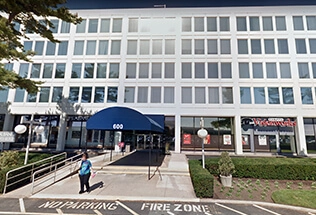
Numerous brachial plexus injuries can be classified as Erb’s Palsy. It is one of the more common and serious birth injuries, typically caused by shoulder dystocia, or obstructed labor. It can result in damage to the nerves that connect the arm and shoulder, and is often seen in cases when excessive force was used to remove the baby. Shoulder dystocia can lead to high-risk complications during delivery, where the physician must often use excess force on the shoulder in order to remove the baby from the womb.
The brachial plexus nerves – which originate in the spinal cord – travel across the shoulder, along the arms, and into the hands. Because of the connectedness of these nerves, fingers can often be damaged during aggressive birth maneuvers. And, the damage is often permanent. A properly trained physician should identify potential risks often leading to shoulder dystocia, which include:
- Heavy birth weight – typically any baby weighing more than 8 pounds and 14 ounces,
- Small-framed mothers,
- Heavy mothers,
- Mothers with diabetes,
- Contracted or flat pelvic regions,
- Protracted second stage of labor, and
- Pregnancy that has extended beyond 40 weeks.
Typically, a physician will avoid shoulder dystocia by scheduling a C-section, rather than risking vaginal birth and Erb’s Palsy.
Types of Erb’s Palsy
There are different forms of injuries that can lead to Erb’s Palsy. The four most common types include:
- An avulsion – the nerve is torn out of the spine.
- A rupture – the nerve was torn, but not where it met the spine.
- A neuroma – the nerve tried to heal, but created scar tissue and placed pressure on the injured nerve praxis. Typically, this injury will see improvement in three months since it was only injured, not torn.
- Neuropraxia – the most common mild form of Erb’s Palsy. It involves localized injuries and a block of the nerve. Most infants will recover within four to six weeks after this occurs.
Sometimes it can be difficult for parents to realize that their child has suffered an injury during birth. There are, however, common symptoms associated with Erb’s Palsy, which include:
- No muscle control or feeling in the injured arm;
- The ability to move, but with limited control;
- The use of hands, but limited or no use of the arm or elbow;
- Facial paralysis on the injured side;
- The inability to crawl without the use of devices;
- The inability to sit up without assistance;
- The entire arm is paralyzed or fingers and arm hang limp.
Was Your Child Injured at Birth?
Birth injuries are typically preventable just through proper maternal care. If your child suffers from Erb’s Palsy, contact the attorneys at Schwartzapfel® Lawyers P.C. We will assess your potential malpractice case and help you recover compensation for your infant’s injury. Call to schedule a consultation at 1-516-342-2200 or fill out our online contact form with your medical questions.















